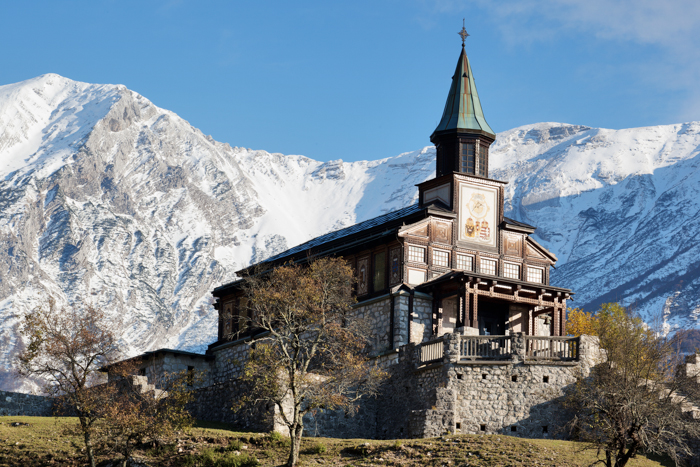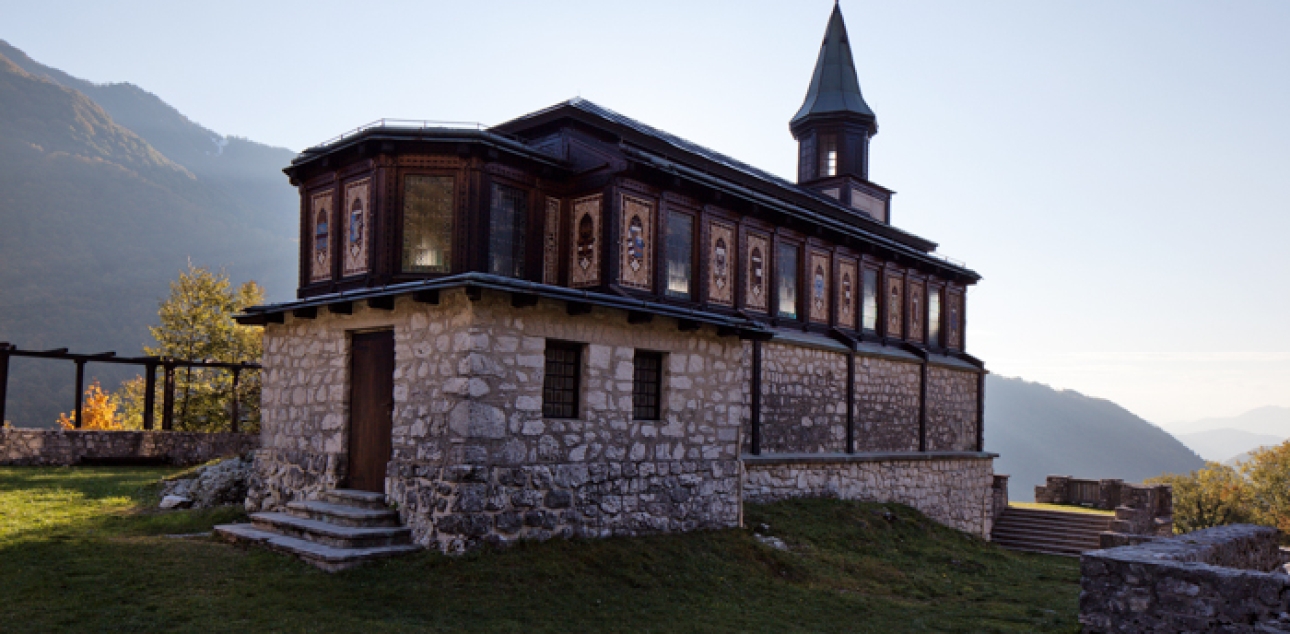The cultural heritage of Triglav National Park and the entire Julian Alps Biosphere Reserve is very fascinating, diverse, and colorful. In this area, different climatic influences and different cultures meet. Each culture and generation has left, and continues to leave, a noticeable mark.
The Alpine cultural heritage of Slovenia is of exceptional importance also because of its connections with other Alpine nations. In this area, the culture of stone and the culture of wood intersect. The Primorska and Mediterranean areas are characterised by a greater use of stone in the construction of houses and even hayracks, while the Gorenjska area is characterised by a greater use of wood.
On the paths through Triglav National Park and its surroundings, we encounter cultural heritage related to architecture, churches, and landmarks, characteristic cultural landscapes, settlements in the valleys and on the mountain pastures, remains of World War I... and if we pay attention, we also come across traces of archaeology.
In the various museums located in this area, we can learn about the history, way of life, and work of our ancestors. These museums also house ancient and artistic artifacts.
Local inns and traditional events represent living cultural heritage: cuisine, oral traditions and folk tales, performances and presentations, customs and habits, knowledge about nature and the environment, as well as economic knowledge and skills.


The most famous cultural gems of the area are Bled Castle, perched high on a rock above the lake, the medieval town center of Radovljica with its manor, Kamen Castle in Begunje, and the mighty Kluže Fortress above the wild Koritnica Gorge.
The Kobarid Museum tells the story of the bloody battles of the Soča Front, the Tolmin Museum is an archaeological center of western Slovenia, and at the Slovenian Alpine Museum in Mojstrana, the past and present come together. We can also visit the Beekeeping Museum in Radovljica, the Blacksmith Museum in Kropa, and the Alpine Dairy Museum in Bohinj.
There are many famous churches, such as the Basilica of Mary Help of Christians in Brezje, the Church of St. John the Baptist by Lake Bohinj, the Church of the Assumption of Mary on Bled Island, the Church of the Holy Spirit at Javorca in the Tolminka Valley, and the Russian Chapel under Vršič Pass.
Liznjek's homestead in Kranjska Gora, Pocar's homestead in Zgornja Radovna, Kajžnk's house in Rateče, Oplen's house in Bohinj, mountain pastures high in the mountains, the Bovec house, architecture of Breginj, and the famous hayracks in Studor are wonderful examples of folk knowledge and tradition.
Even on Slovenia's highest peak, Triglav mountain, we can find a remarkable example of cultural heritage – the Aljaž Tower!
The mentioned gems are just a small part of the entire cultural heritage of the Julian Alps Biosphere Reserve. Put on your walking shoes or grab your mouse, and off you go to explore!
Thank you.













